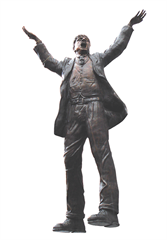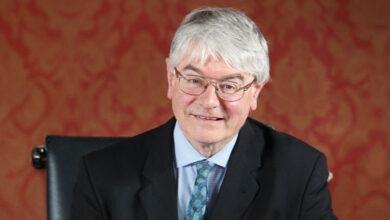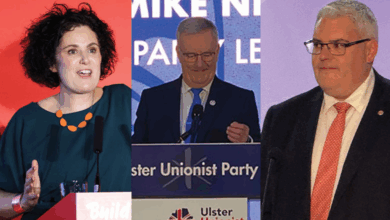Decent work
 ICTU’s Macdara Doyle makes the case for decent work and not cheap, precarious and low paid work that is on the increase due to the economic crisis.
ICTU’s Macdara Doyle makes the case for decent work and not cheap, precarious and low paid work that is on the increase due to the economic crisis.
We have lost some 360,000 jobs since the onset of the crisis in 2008. A good proportion of those losses are directly attributable to the complete collapse of domestic demand in the economy, which has fallen continuously for five years and is now down by 26 per cent. It will almost certainly fall further.
A drop of this magnitude and duration is virtually unheard of in post-war Europe. Yet, every day our print and broadcast media hum with chatter about green shoots: detecting their presence in our scorched earth economy keeps many an ‘analyst’ gainfully employed.
Domestic demand is not an abstract theoretical construct, but a tangible, concrete indicator of the health of an economy and the well-being of its citizens.
It is people shopping for food, groceries, clothes and perhaps the odd luxury. It represents people stopping for a coffee or a quick lunch, maybe even celebrating a family occasion with a night out. It represents people using local services and tradespeople to carry out repairs and improvements to their homes.
But as people cut and reduce their spending in response to ongoing austerity, demand contracts and jobs are lost. In short, the current ill-health of our economy and society is neatly encapsulated in that one statistic.
Quite clearly, the 360,000 people who have lost their jobs in this timeframe have been the hardest hit by the current crisis.
But those at work have also suffered. Across both public and private sectors we have seen the growth of what is termed ‘precarious work’.
While this unwelcome trend has been apparent for some years, and Ireland is not unique in this regard, it has undoubtedly been exacerbated by the current crisis.
Precarious work is defined as work which is highly insecure, badly paid and incapable of supporting a household or family.
A recent study by the Mandate trade union found a high incidence of precarious work within the country’s retail sector. It noted: “These workers are trapped in jobs that don’t allow them to earn a living wage, but at the same time deny them the opportunity to work a second job or qualify for social welfare supports.”
Thus, while men have been worst affected by the unemployment crisis, among those who have remained in employment, women have been hit hardest by the recession.
Women tend to be over-represented in the ranks of the precarious workforce. As a result, they have been hardest hit by this collapse of domestic demand, according to research carried out by Dr Micheal Collins of the Nevin Economic Research Institute.
Dr Collins spoke at the recent annual Congress Women’s Seminar and told delegates: “Reduced demand in sectors of the economy where female participation is higher, particularly retail and catering, has impacted on the numbers of women at work, the number of hours available for them to work and, consequently, on the income of their households.”
He said that high concentrations of women in low paid and precarious employment contributed to gender inequality and the continued gender pay gap, estimated at anything up to a 14 per cent differential.
Interestingly, the gap widens when women have children, which speaks volumes about Ireland’s poor childcare provision and the support afforded to working families.
In this context, the case for the provision of decent work becomes all the more compelling. Decent work is defined as work carried out in conditions of “freedom, equity, security and human dignity.”
As the International Labour Organization points out, the issue facing modern society is “not just the creation of jobs, but also the creation of jobs of acceptable quality.”
If Ireland hopes to construct a sustainable economic model on which to base future development, then decent work must be at its core. Cheap, precarious and low paid work does not provide a secure foundation for future generations.





